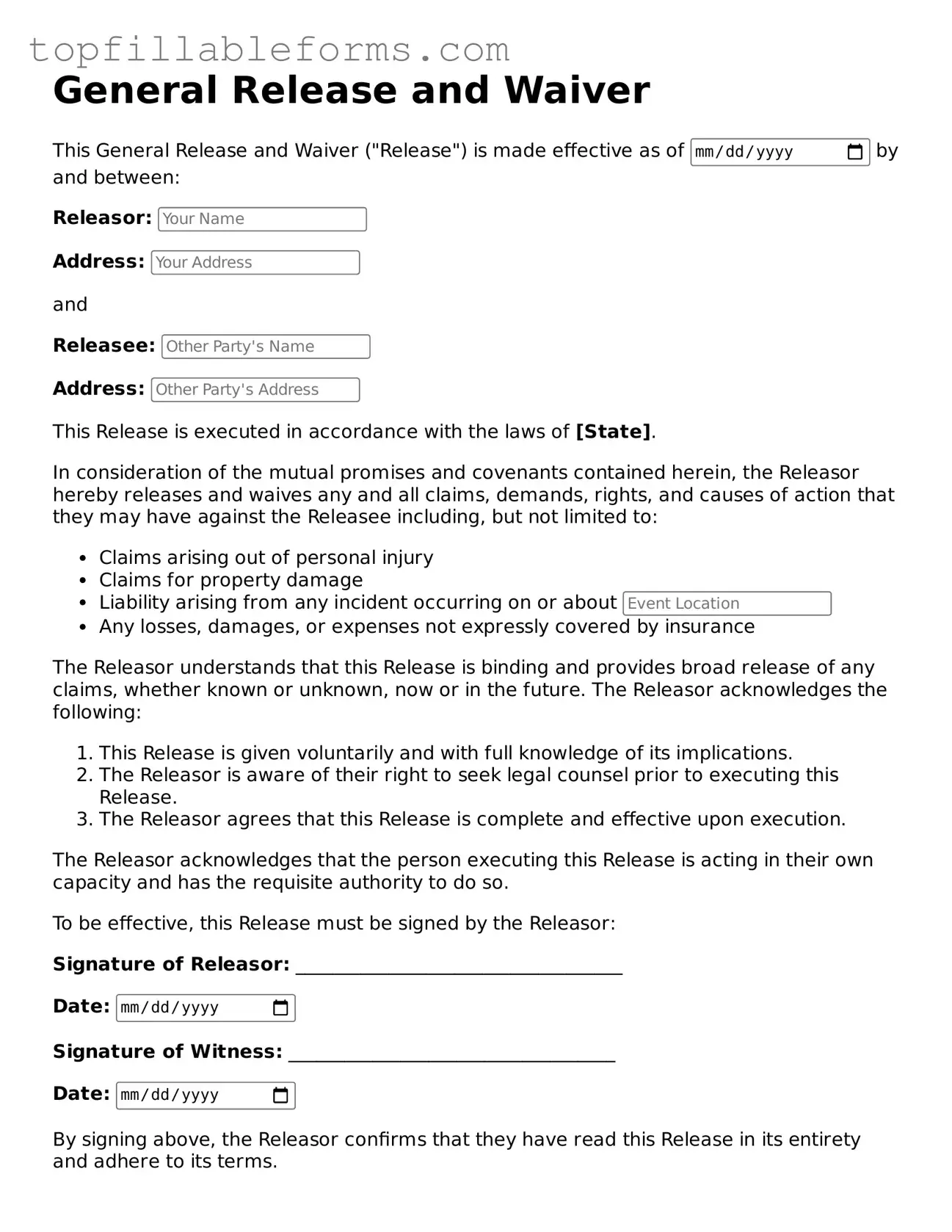Free General Release and Waiver Form
The General Release and Waiver form is a legal document that allows one party to release another from liability for certain claims or damages. This form is commonly used in various situations, such as settling disputes or ending contractual relationships. Understanding its purpose and implications is essential for anyone considering signing one.
Open General Release and Waiver Editor Here
